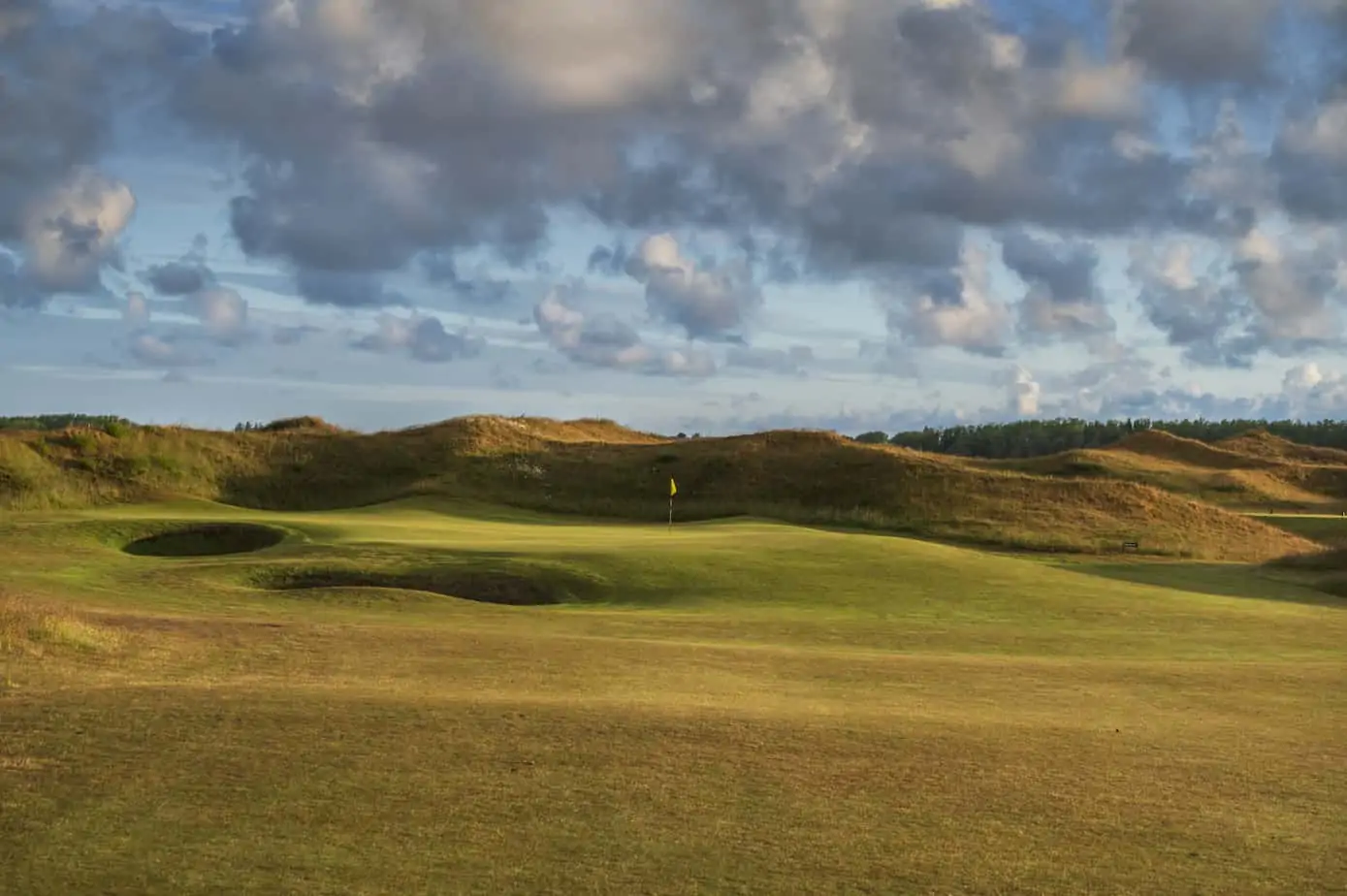Marine GC Sylt: Linksgolf means saving resources
“The Marine Golf Club Sylt would like to convey the fascination of links golf to its members and guests.” The announcement on the website follows the live experience on the golf course, which is located in the immediate vicinity of the airfield on Sylt. In fact, you will encounter pot bunkers, the classic defended hard greens, valleys and waves that run through the fairways. The wind whistles, the balls run across the ground, trees are rather rare here. If you take a closer look at the dunes on the side of the fairways, you can see that this is not natural dune terrain, but a landscape that only grew through the construction of the golf course.
The oldest club on the island Sylt in Germany was created with the Royal Air Force, which as an occupying force maintained an airfield here for a long time. First six, later nine holes were built. When the British withdrew, the Bundeswehr took over. When they left the island completely in 1989, the golf club was able to buy the site. “That’s 80 hectares in total,” explains Roland Grüger, who is responsible for the issue of space on the board. He has been in charge of “ Golf & Nature”, the certification program of the German Golf Association, right from the start. In 2011, the Marine Golf Club was the first facility in Schleswig-Holstein to be awarded the gold certificate.
For Grüger, the harsh climate of the island defines the objective of all measures: “We have to struggle with water shortages here again and again, and at the same time the loamy subsoil does not drain precipitation well. The goal is to create good playing conditions here with as little fertilizer and pesticides as possible.” When the course was expanded and the old fairways were rebuilt, undemanding Festuca grasses were the first choice. They need little water and can cope with the harsh climate. On the other side of the fairways, in addition to meadows in the flat area, a lot of beach grass was planted in the dunes, and in some other corners the heath was also renatured. “Glockenheide, Besenheide, Erika, everything is actually developing quite well here,” sums up Grüger. Sheep have been used again and again in recent years to care for the rough areas, and that also fitted in with the links golf concept.
Linksgolf stands for little water consumption
The optimization of the sprinkling, the use of individually controllable sprinklers is a long-term project that the club is pursuing in the field of water management. “In the summer months it is common here to play on fairways that tend to be brownish,” Grüger notes. This is not a problem in external communication. In any case, golfers do not associate links golf with deep green holes.
It is easy to see that managing golf on Germany’s northernmost island is not an easy business as you walk across the course: a nature reserve adjoins the golf course, and the municipality would like to build a cycle path. The golf course itself would like to include a short course and an improved driving range. Areas have to be exchanged, nature conservation has top priority anyway. On the other hand, tourism also plays an important role. Ultimately, the question of how to get greenkeeping staff on the island with its high cost of living keeps the club managers busy. The sustainability issues that have been shaping the island of Sylt for some time are reflected here as in a mini cosmos.









